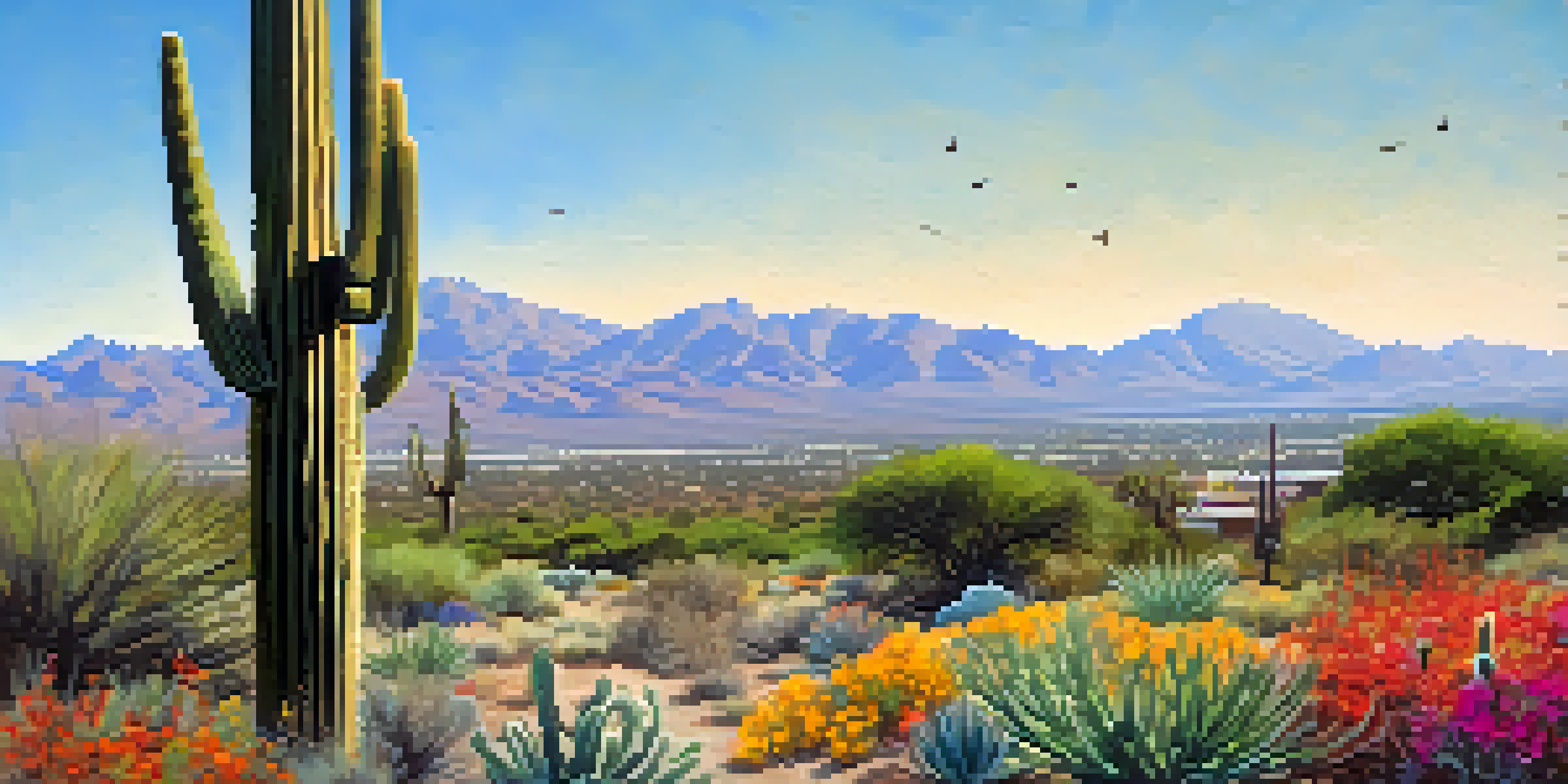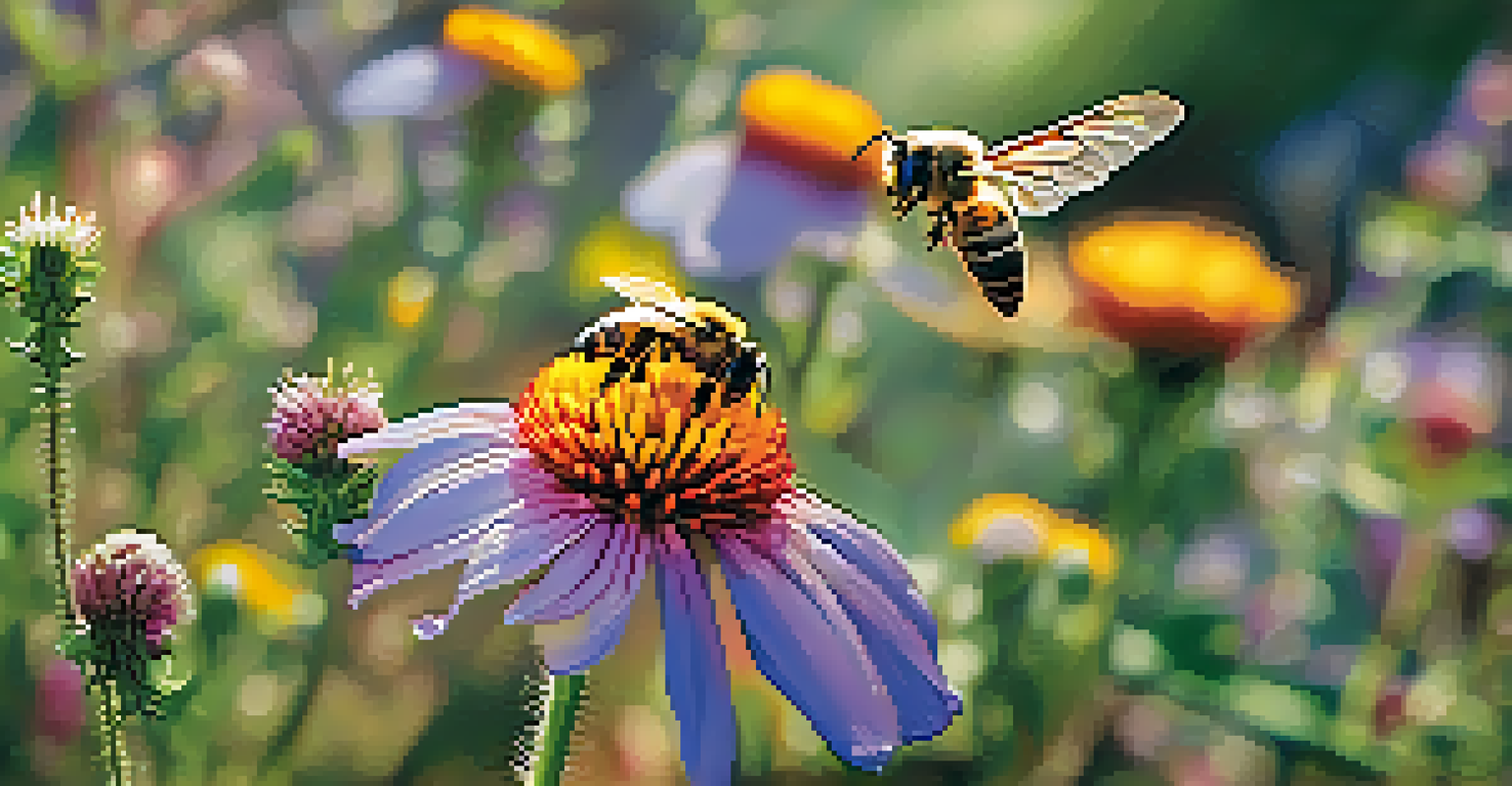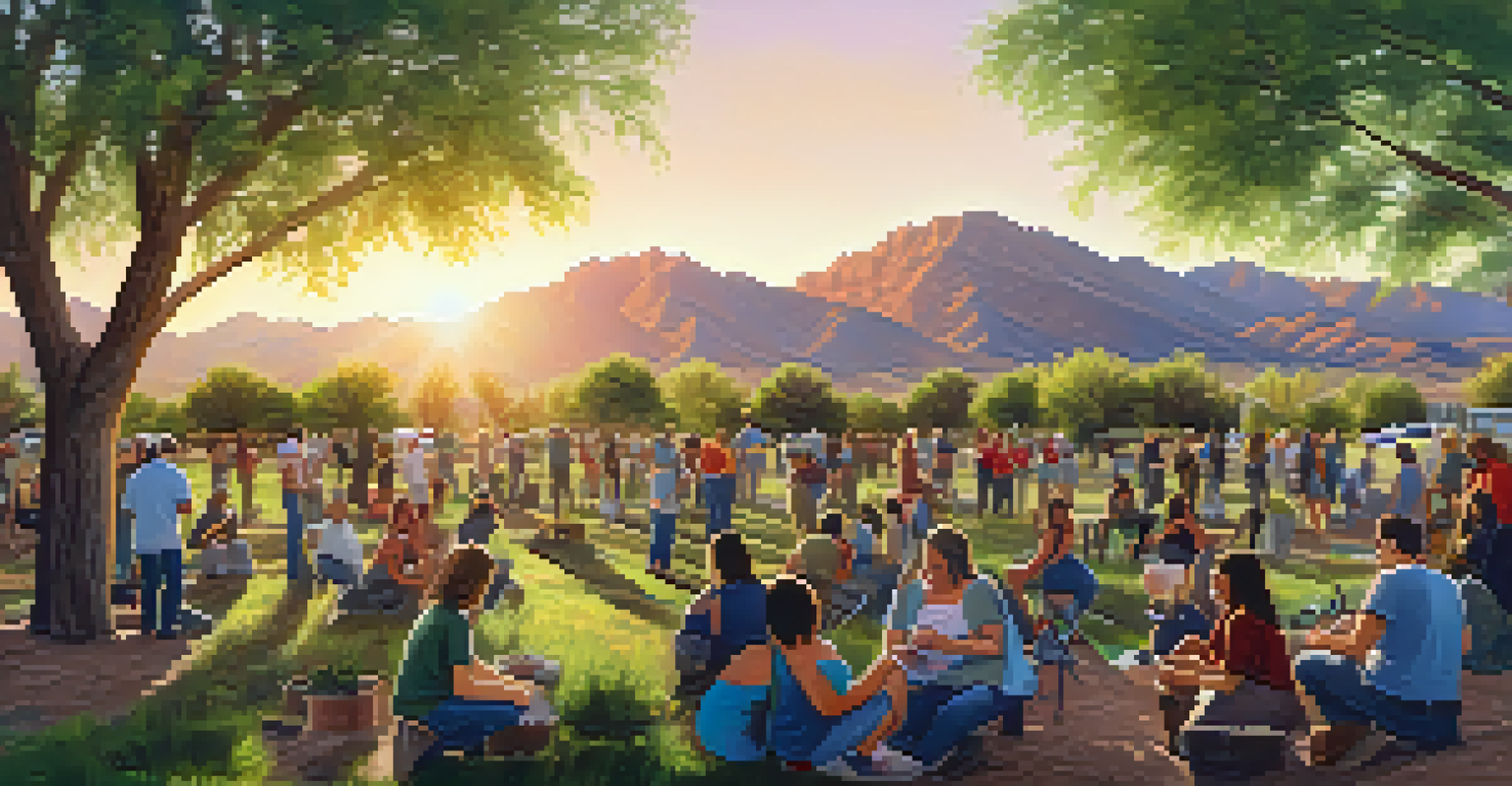The Role of Tucson's Urban Green Spaces in Biodiversity

Understanding Urban Green Spaces in Tucson
Urban green spaces refer to parks, gardens, and natural areas within cities that provide essential habitats for wildlife. In Tucson, these spaces play a crucial role in maintaining ecological balance, offering refuge to various species. From the lush greenery of Reid Park to the desert flora at the Tucson Botanical Gardens, each area contributes uniquely to the local ecosystem.
The greatest threat to our planet is the belief that someone else will save it.
These green spaces not only enhance the aesthetic appeal of the city but also serve as vital corridors for wildlife movement. They allow different species to thrive in an urban environment, promoting biodiversity. Additionally, they offer citizens a chance to connect with nature, fostering a greater appreciation for the environment.
Tucson's climate and geography create a unique habitat that supports both native and migratory species. The combination of urban design and green spaces can significantly affect local wildlife populations. As we explore these areas, it’s essential to understand their importance in the broader context of urban ecology.
Biodiversity: What It Means and Why It Matters
Biodiversity refers to the variety of life found in a particular habitat or ecosystem. It includes the diversity of species, genetic variations, and the ecosystems themselves. This variety is crucial for maintaining the health of our planet, as it contributes to resilience against environmental changes.

In urban areas like Tucson, biodiversity can often be overlooked, but it plays a vital role in ecosystem services. These services include pollination, water purification, and carbon sequestration, all essential for a sustainable urban environment. High biodiversity can lead to healthier ecosystems, which in turn support human well-being.
Urban Green Spaces Boost Biodiversity
Tucson's parks and gardens provide essential habitats for wildlife, promoting biodiversity and ecological balance.
Moreover, a rich biodiversity within urban green spaces can enhance the quality of life for residents. Access to diverse flora and fauna can improve mental health, promote physical activity, and foster community engagement. Understanding this relationship emphasizes the need for preserving and enhancing Tucson’s green spaces.
Key Species Found in Tucson's Urban Green Spaces
Tucson's urban green spaces are home to a variety of species, each playing a unique role in the ecosystem. For instance, native birds like the Gambel's quail and the cactus wren can often be spotted in parks and gardens. These species contribute to the local biodiversity and serve as indicators of a healthy environment.
In every walk with nature, one receives far more than he seeks.
In addition to birds, several plant species thrive in Tucson's green areas, including the iconic saguaro cactus and various wildflowers. These plants not only provide food and shelter for wildlife but also contribute to the city's charm and character. The presence of such species showcases the rich biodiversity that urban spaces can support.
Furthermore, urban green spaces also attract pollinators, such as bees and butterflies, which are essential for plant reproduction. By creating environments that support these key species, Tucson fosters a balanced ecosystem that benefits both wildlife and residents alike.
The Impact of Urbanization on Biodiversity
Urbanization poses significant challenges to biodiversity, as natural habitats are often replaced with buildings and infrastructure. In Tucson, this transformation has led to habitat fragmentation, making it harder for wildlife to thrive. Understanding these impacts is crucial in developing strategies to protect remaining green spaces.
One of the primary concerns of urbanization is the loss of native species, which struggle to adapt to changing environments. As urban areas expand, many species find it difficult to survive, leading to a decline in biodiversity. This not only affects wildlife but can also disrupt ecosystem functions that are vital to human health.
Community Engagement is Key
Active participation in conservation efforts helps preserve Tucson's green spaces and fosters a sense of responsibility towards the environment.
However, Tucson's approach to integrating green spaces within urban planning offers a glimmer of hope. By prioritizing biodiversity in city development, planners can create environments that support both people and wildlife. This balance is essential for fostering a sustainable urban future.
Community Involvement in Biodiversity Preservation
Community engagement is vital in preserving Tucson's urban green spaces and the biodiversity they support. Residents can play an active role by participating in local conservation efforts, such as tree planting and habitat restoration projects. This involvement fosters a sense of ownership and responsibility towards the environment.
Moreover, educational programs can help raise awareness about the importance of biodiversity and encourage sustainable practices. Schools and community organizations can collaborate to create workshops and events that highlight the value of local wildlife. Such initiatives not only educate but also inspire individuals to take action.
By working together, the community can create a positive impact on Tucson's urban ecology. When people understand their role in supporting biodiversity, they are more likely to advocate for policies that protect green spaces. This collective effort can lead to a healthier, more vibrant urban environment.
Future Challenges and Opportunities for Tucson's Green Spaces
As Tucson continues to grow, urban green spaces will face numerous challenges, including climate change and increased development pressure. Rising temperatures and changing rainfall patterns can affect the health of these areas and the species that depend on them. It’s essential to anticipate these changes and develop adaptive strategies.
However, these challenges also present opportunities for innovation. Integrating green infrastructure, such as rain gardens and green roofs, can enhance biodiversity while managing urban runoff. Such solutions not only support wildlife but also improve the overall resilience of urban environments.
Innovative Solutions for Urban Challenges
Integrating green infrastructure can enhance biodiversity while addressing the challenges posed by urbanization and climate change.
By embracing a forward-thinking approach, Tucson can become a model for other cities facing similar challenges. Investing in green spaces today will ensure that they continue to provide critical habitats and benefits for future generations.
Conclusion: Embracing Tucson's Urban Biodiversity
In conclusion, Tucson's urban green spaces are vital for supporting biodiversity and enhancing the quality of life for residents. By understanding their importance and advocating for their preservation, we can foster a healthier urban environment. Every small action counts, whether it's planting a tree or participating in community clean-ups.
As we move forward, it is crucial to maintain a balance between urban development and the preservation of natural habitats. Engaging the community and implementing innovative solutions can help ensure that Tucson remains a thriving city for both people and wildlife.

Ultimately, embracing Tucson's urban biodiversity will enrich our lives and the environment. Together, we can work towards a sustainable future where nature and urban life coexist harmoniously.